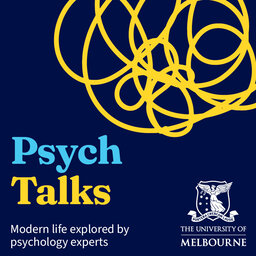Is TikTok toxic for our body image?
We've heard that social media can warp perceptions about our bodies, dieting and appearance. So what happens when TikTok invents a new type of algorithm – one that's incredibly powerful at tapping into our inner desires and anxieties? Join us for a new series of PsychTalks and hear Dr Scott Griffiths chat about his astonishing study on how TikTok can harm those vulnerable to eating disorders.
Discover more about Scott’s research and check out the Butterfly Foundation.
Featuring Dr Scott Griffiths, Psychology Researcher at the University of Melbourne’s School of Psychological Sciences. Scott specialises in body image and physical appearance.
Episode credits: Hosted by Associate Professor Cassie Hayward and Professor Nick Haslam. Produced by Carly Godden and Louise Sheedy. Mixed by David Calf. Music by Chris Falk.
 PsychTalks
PsychTalks


